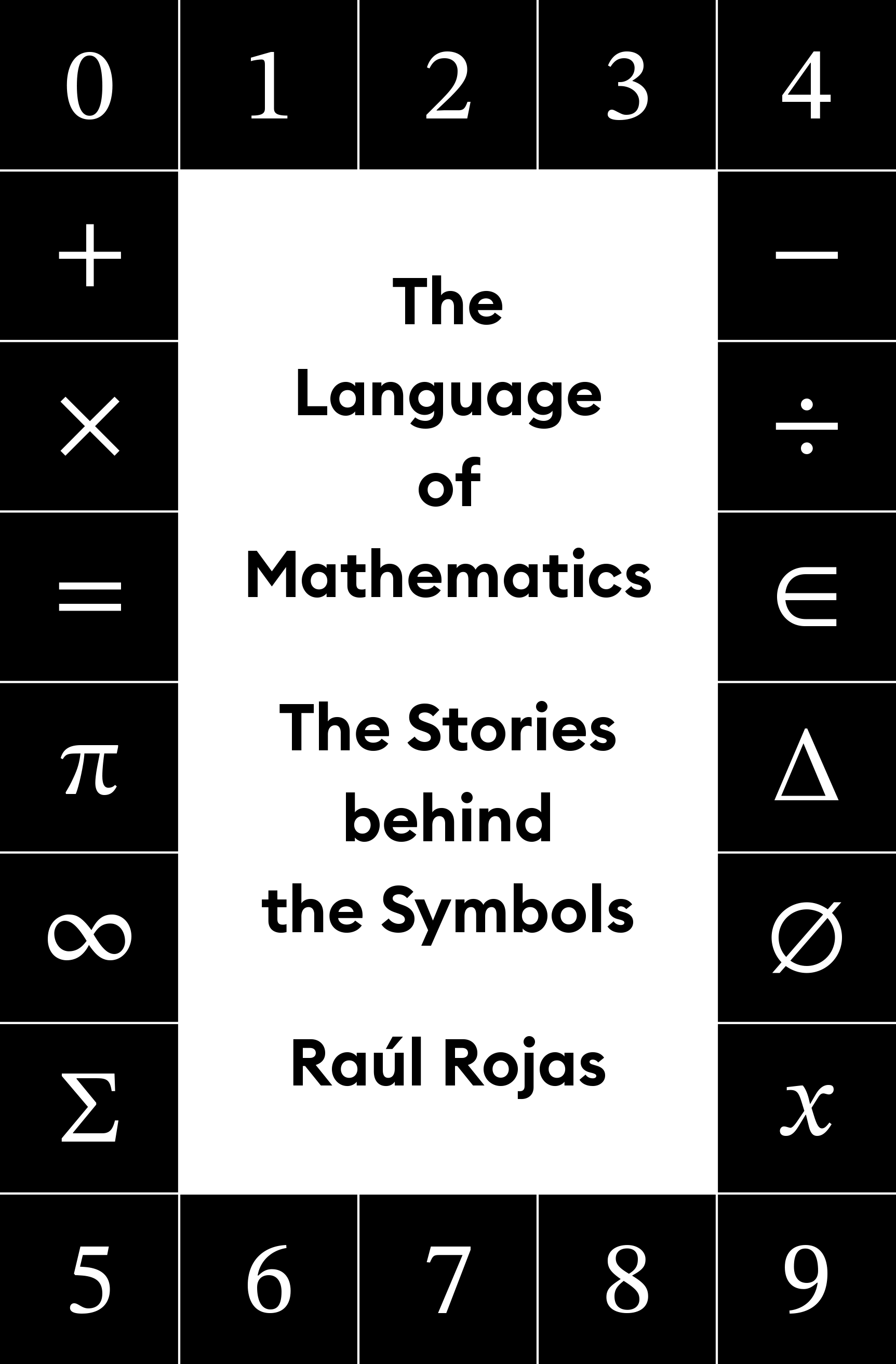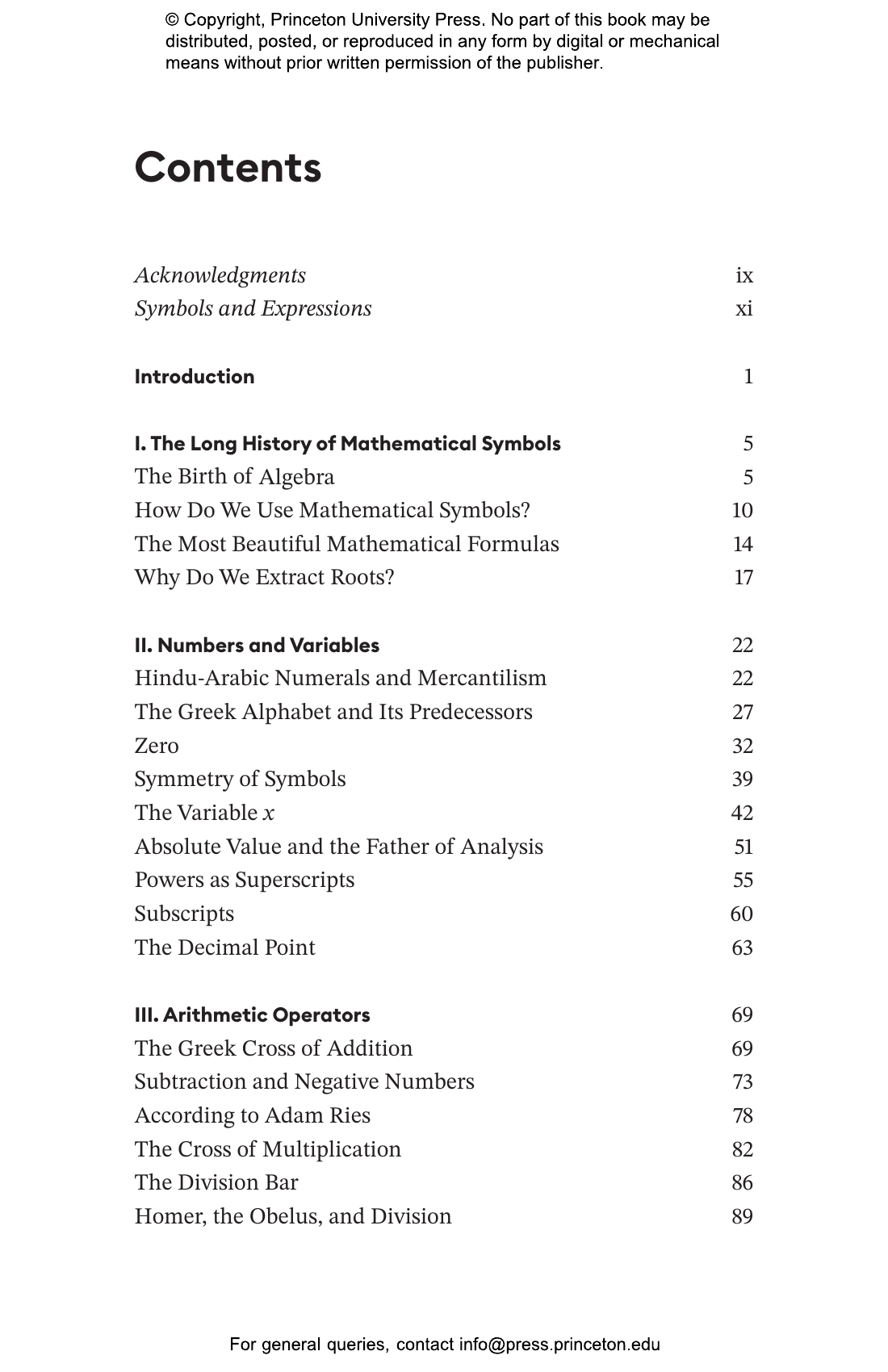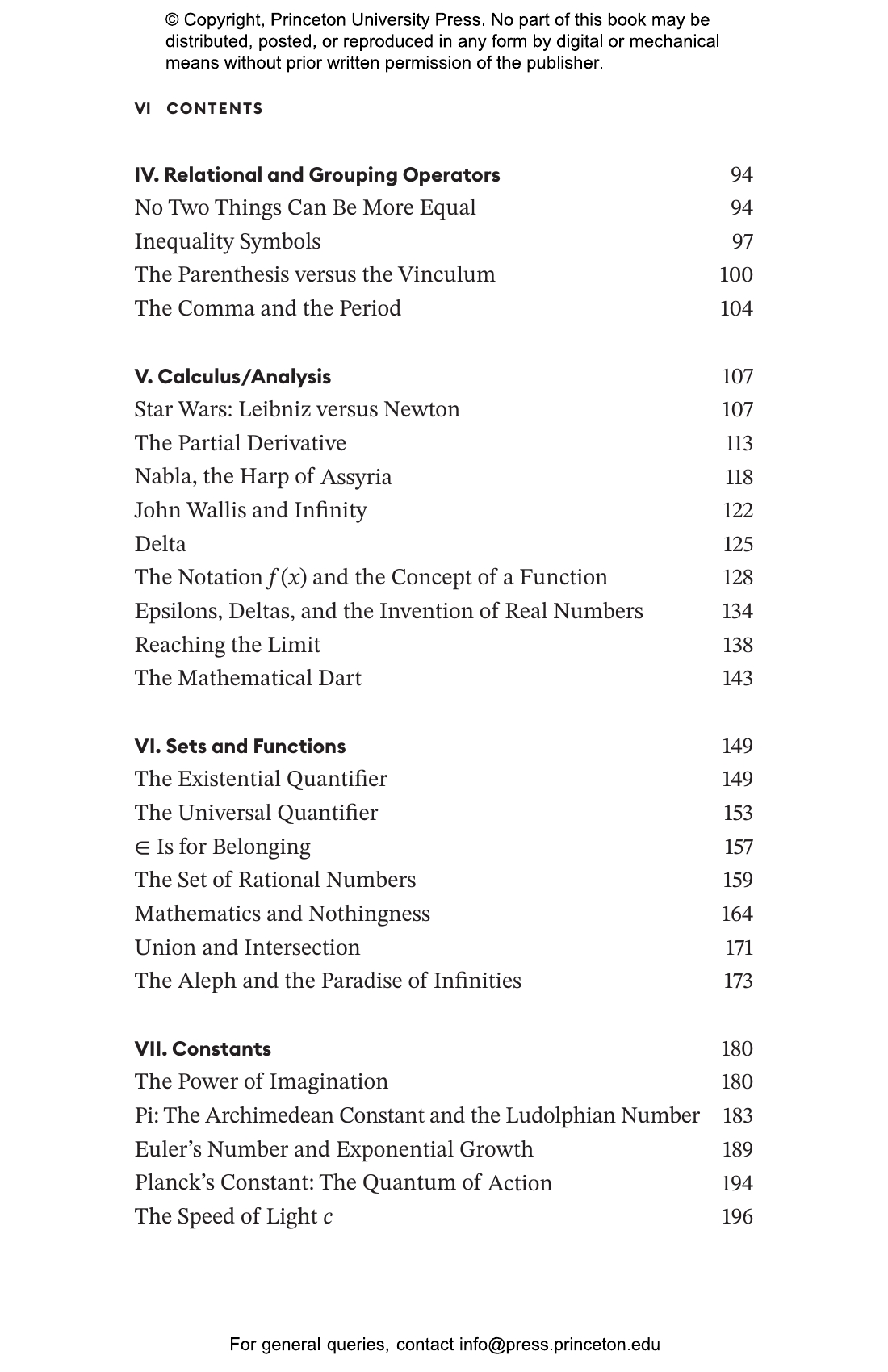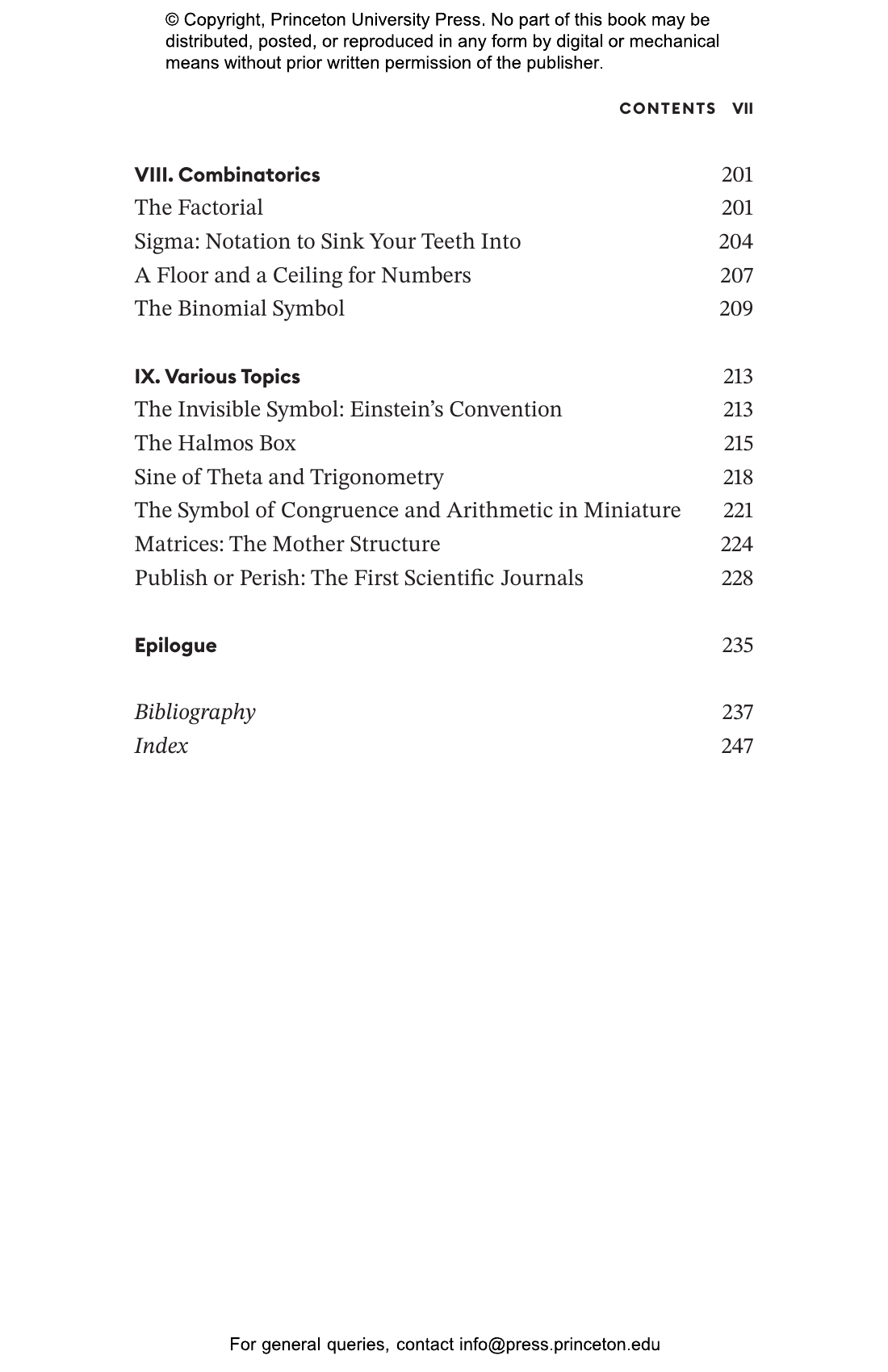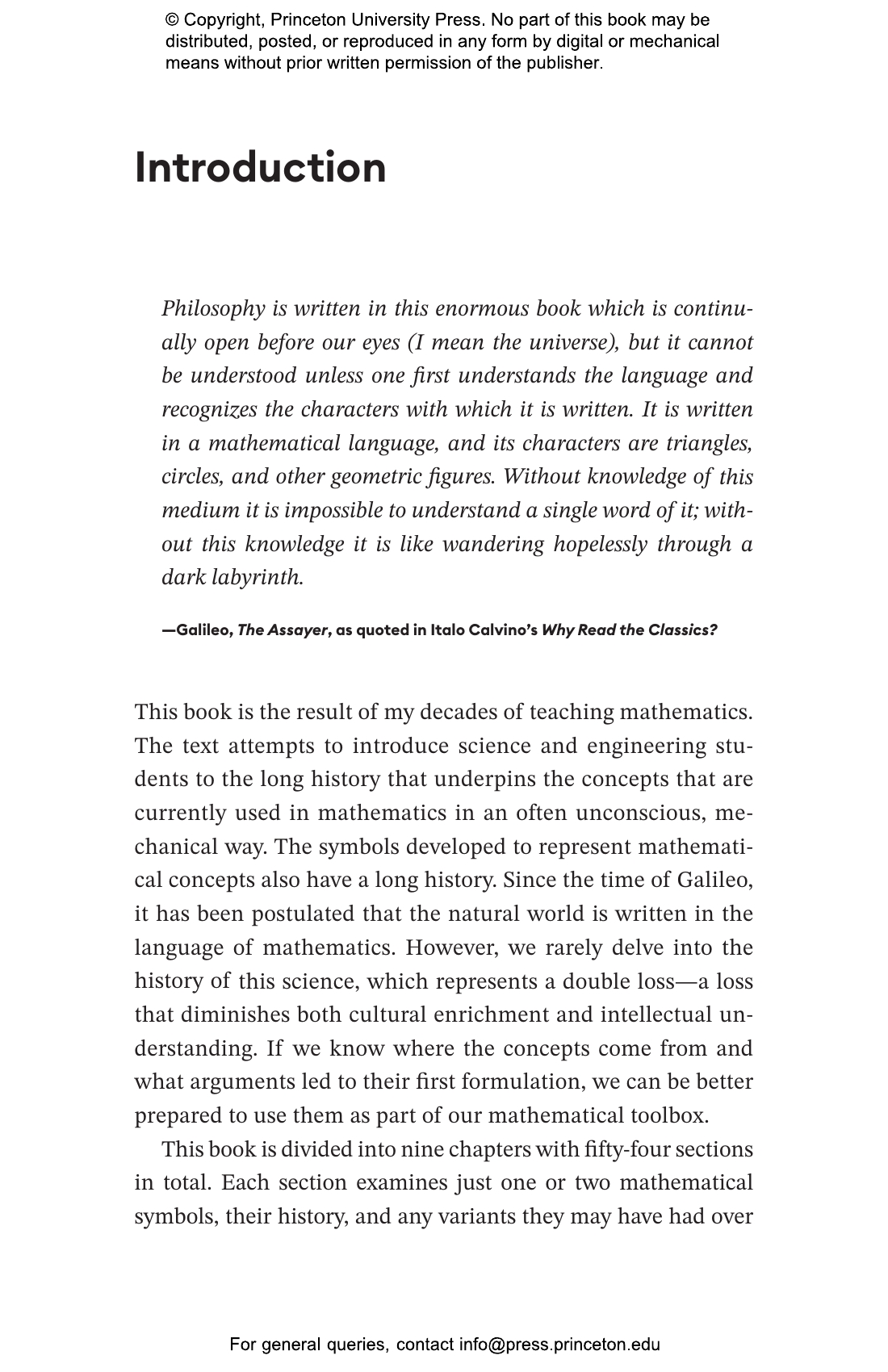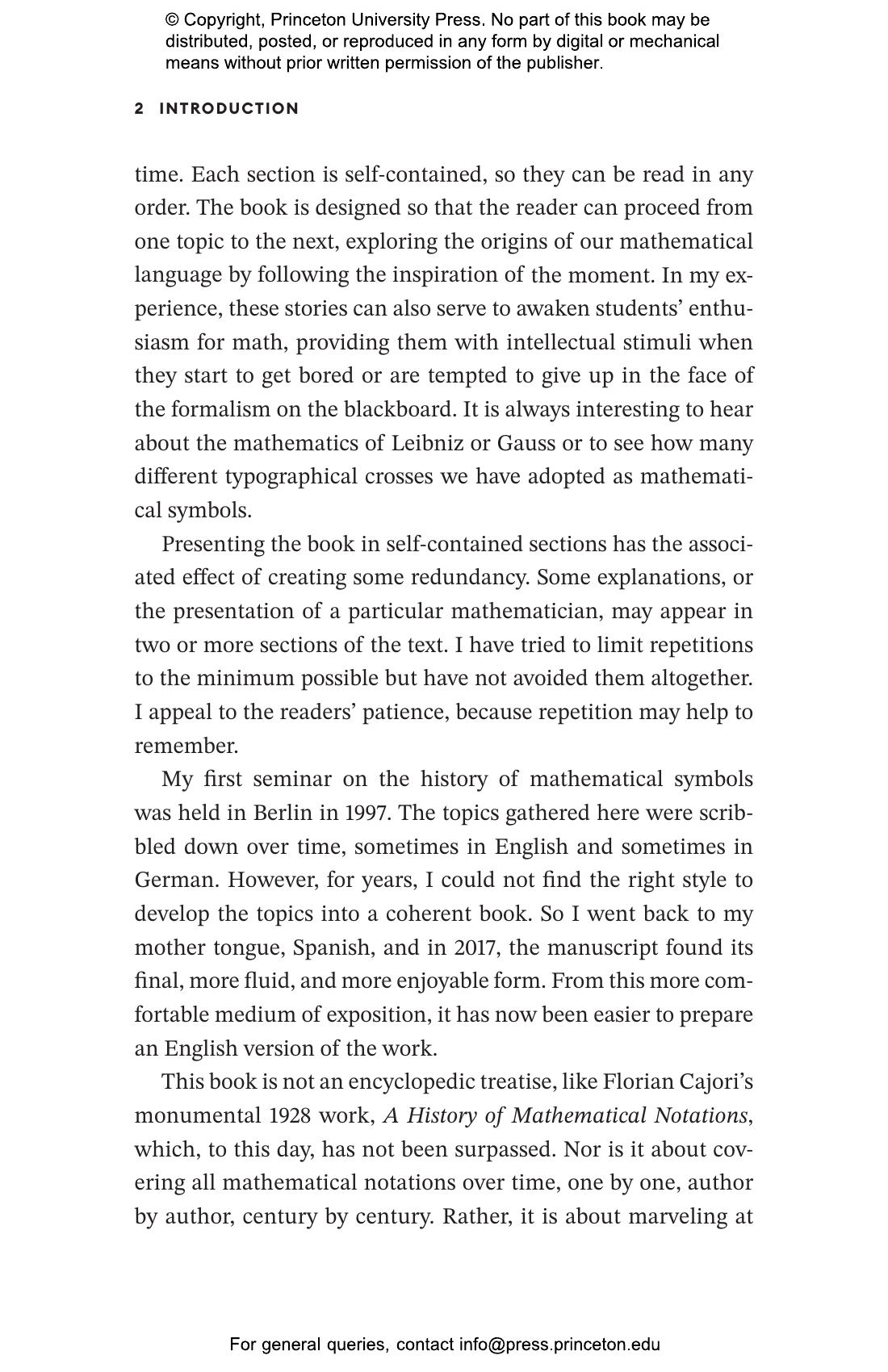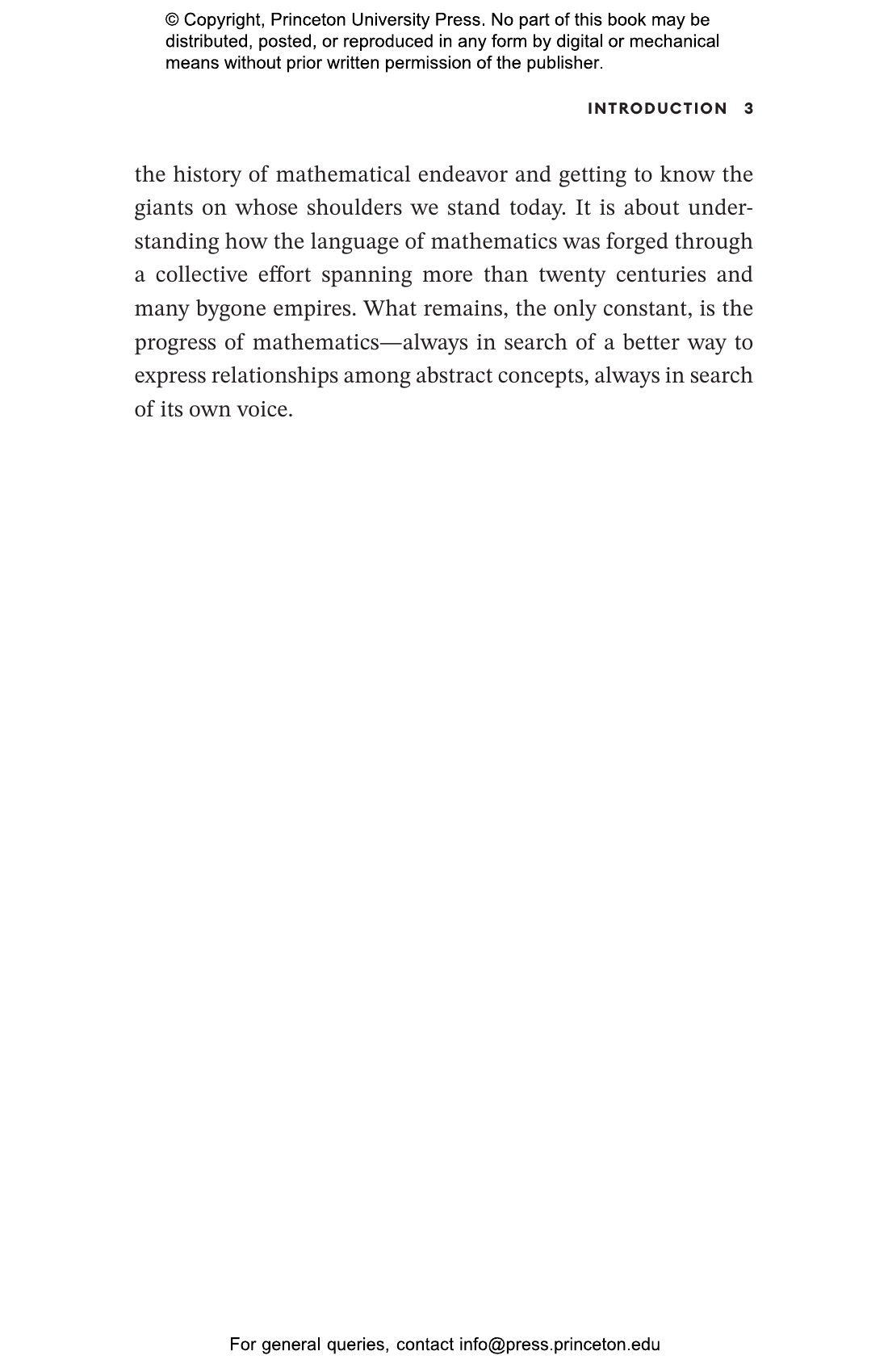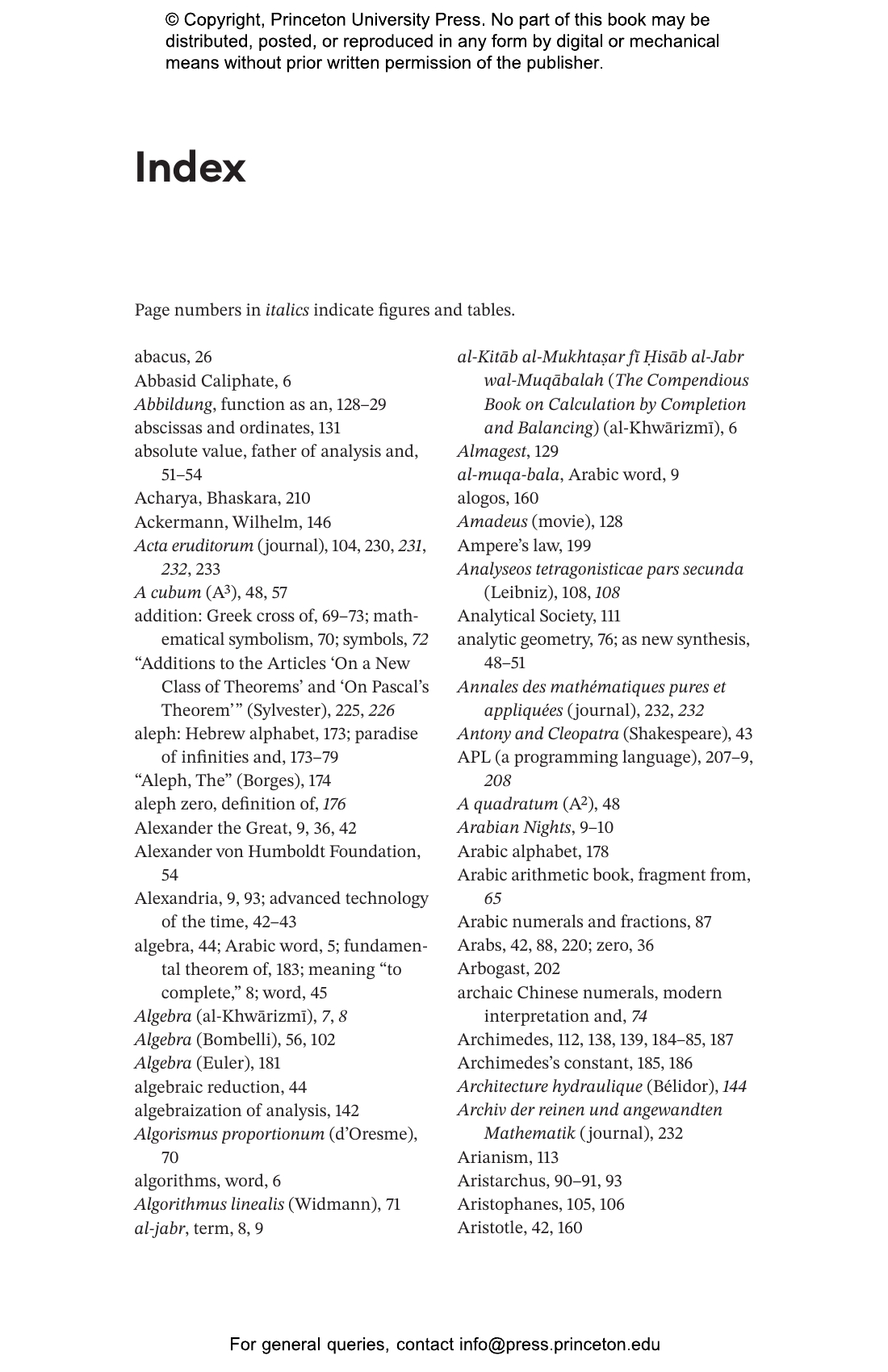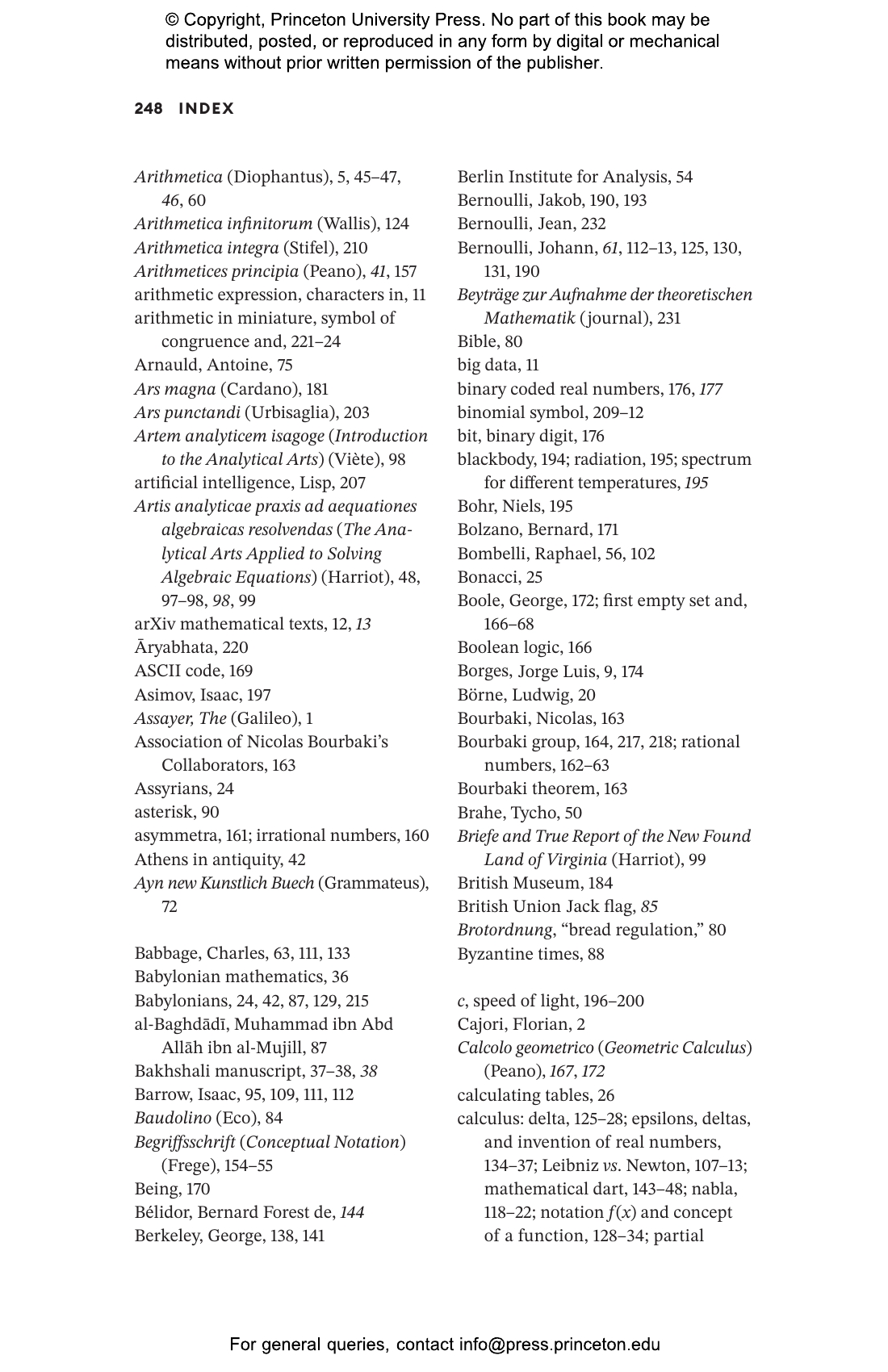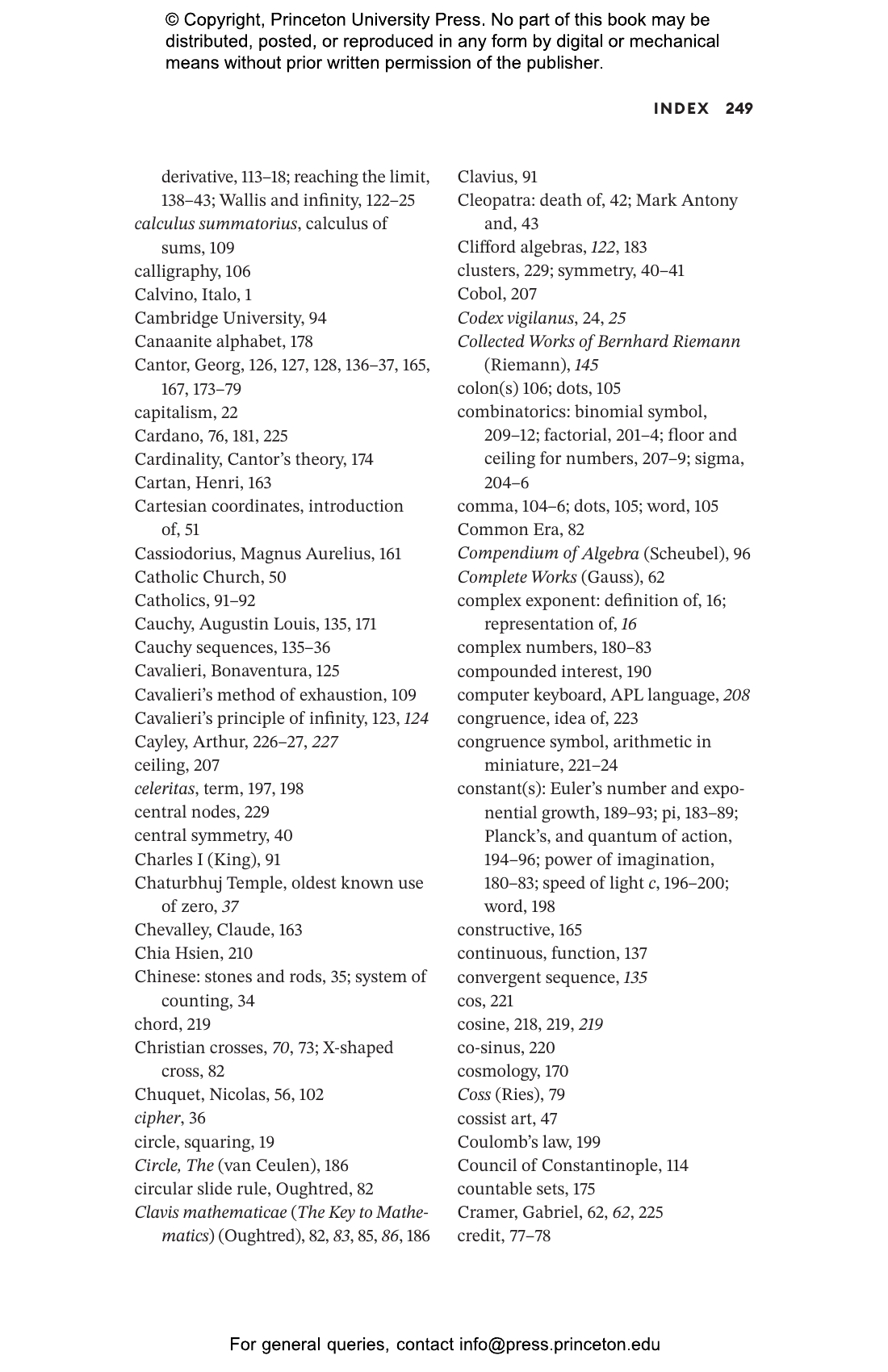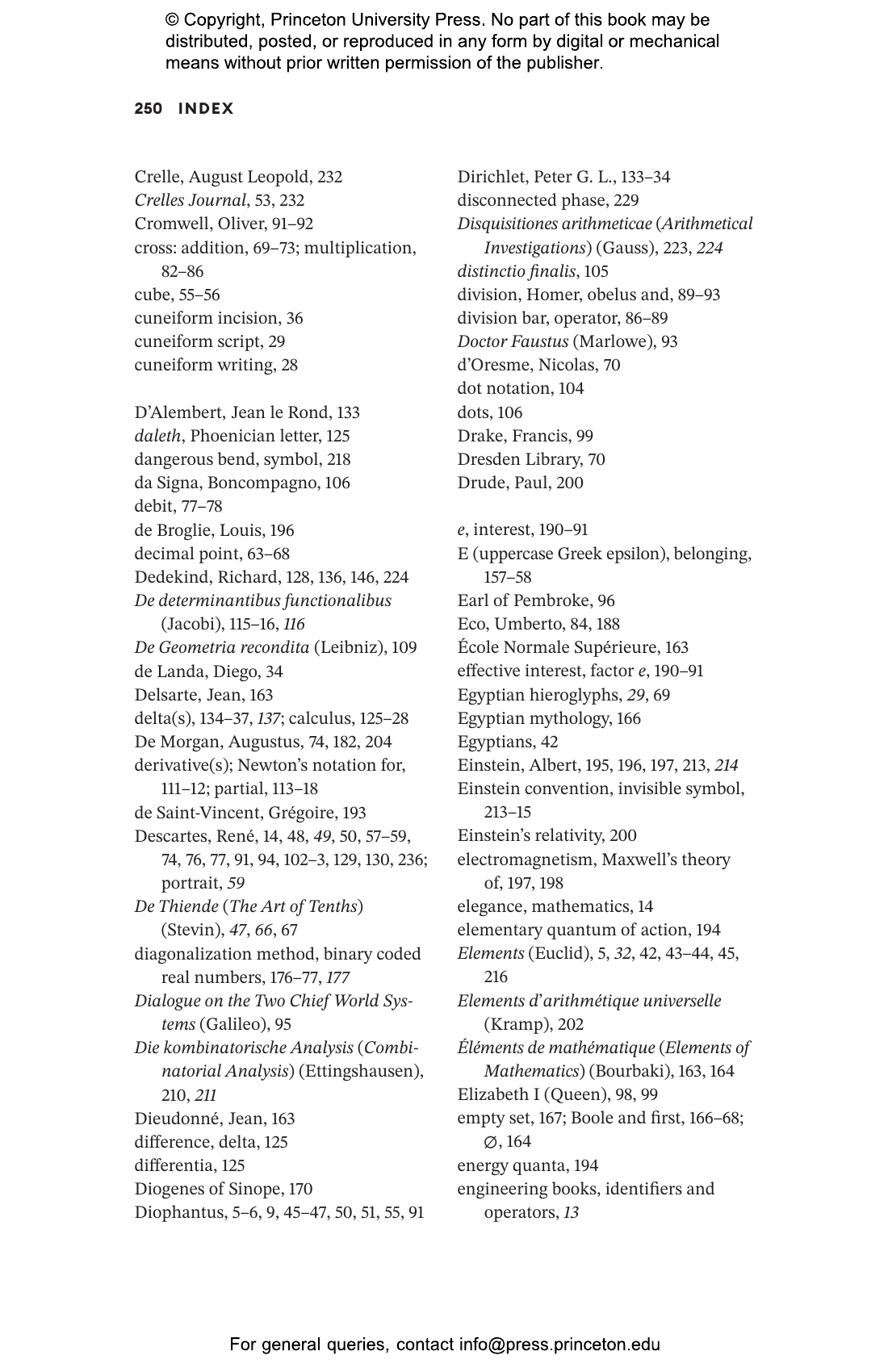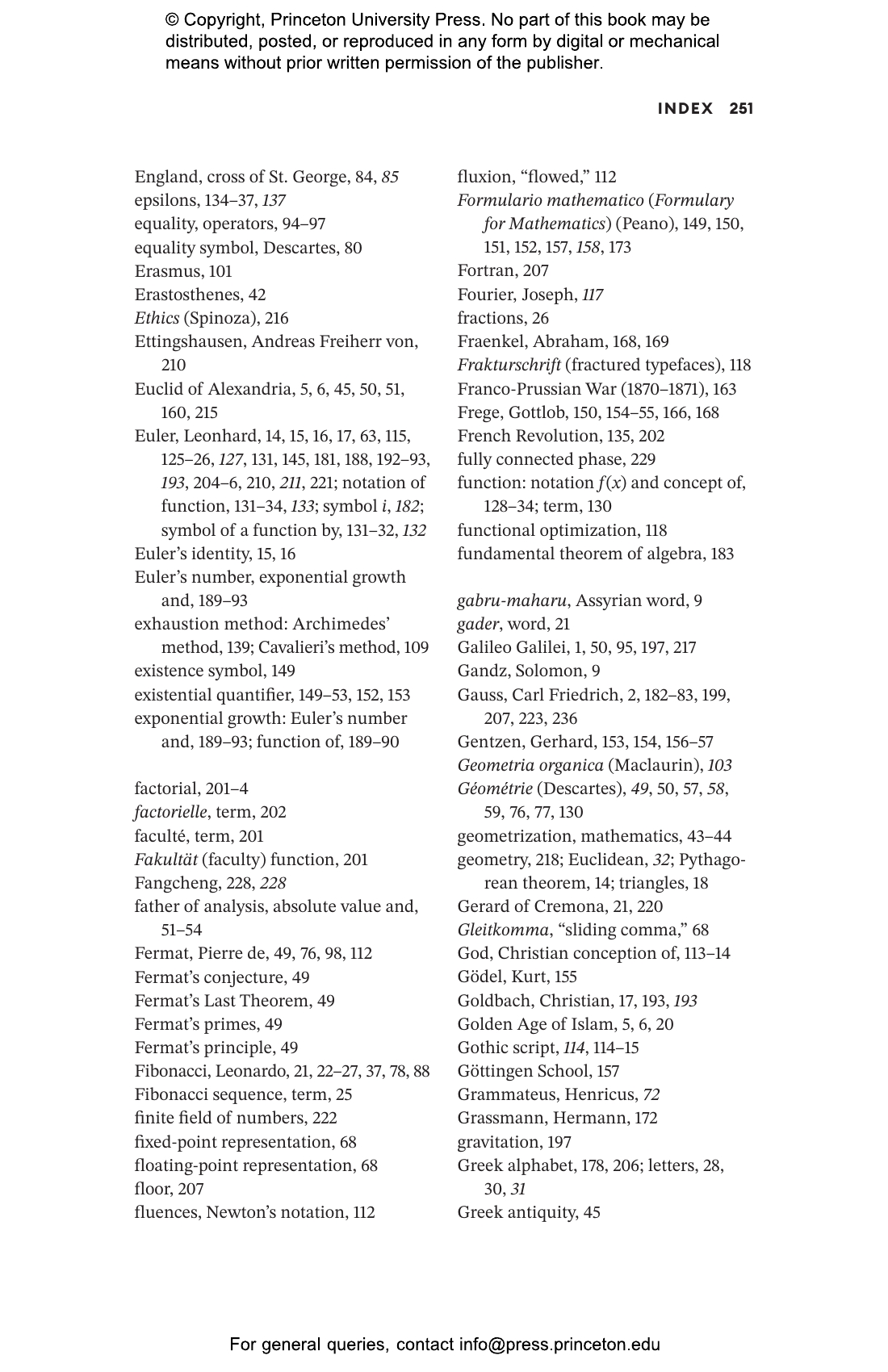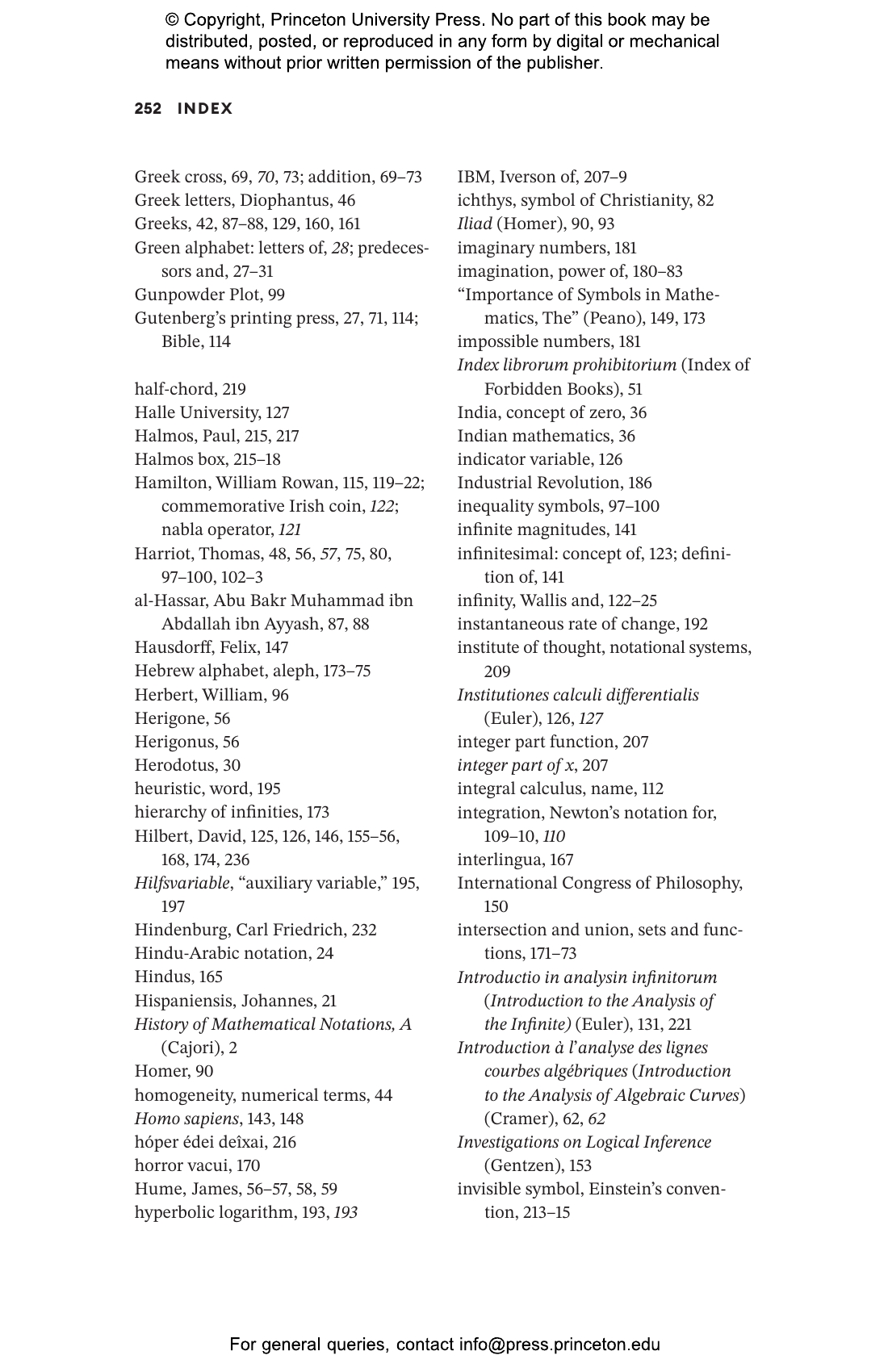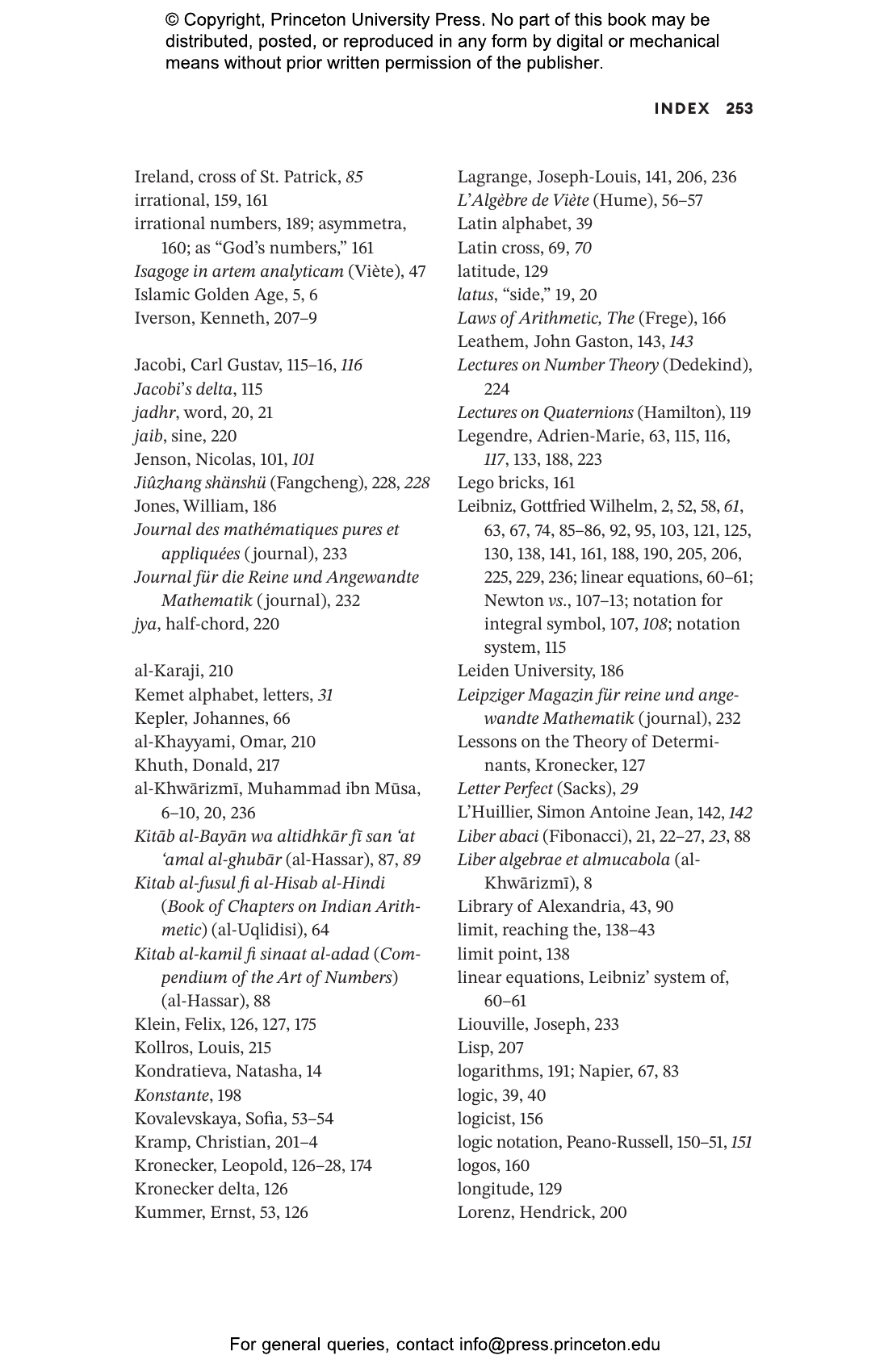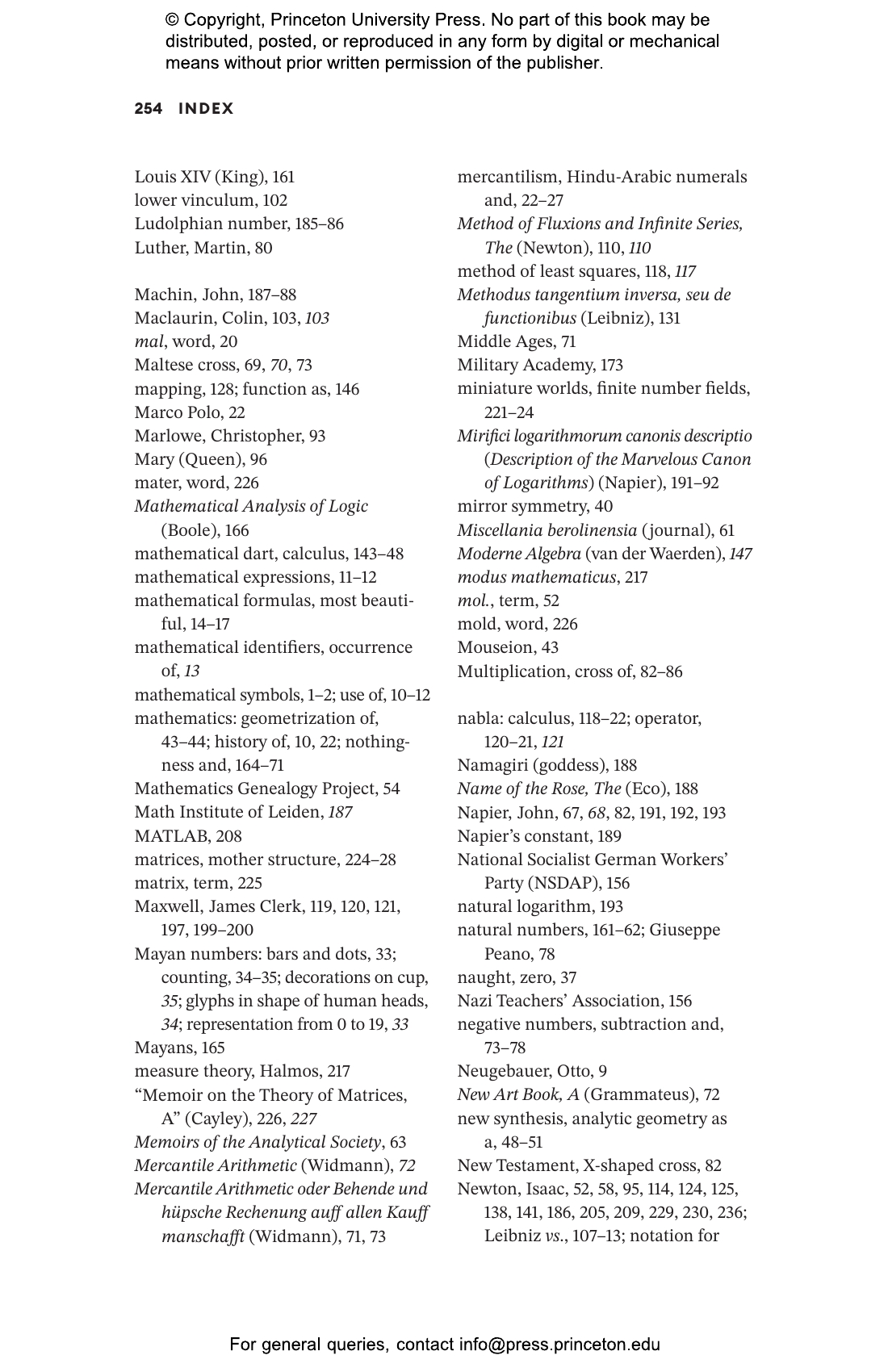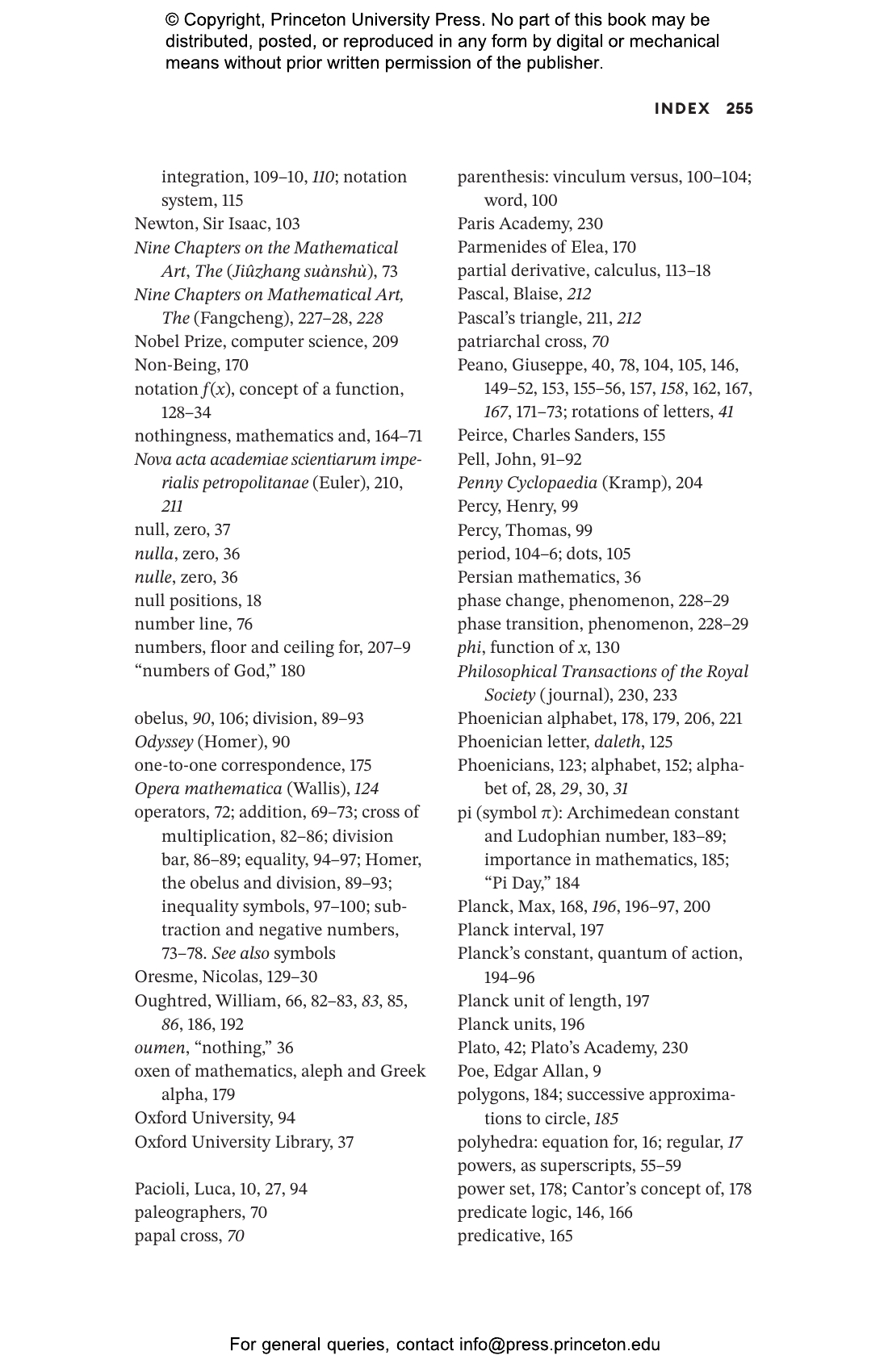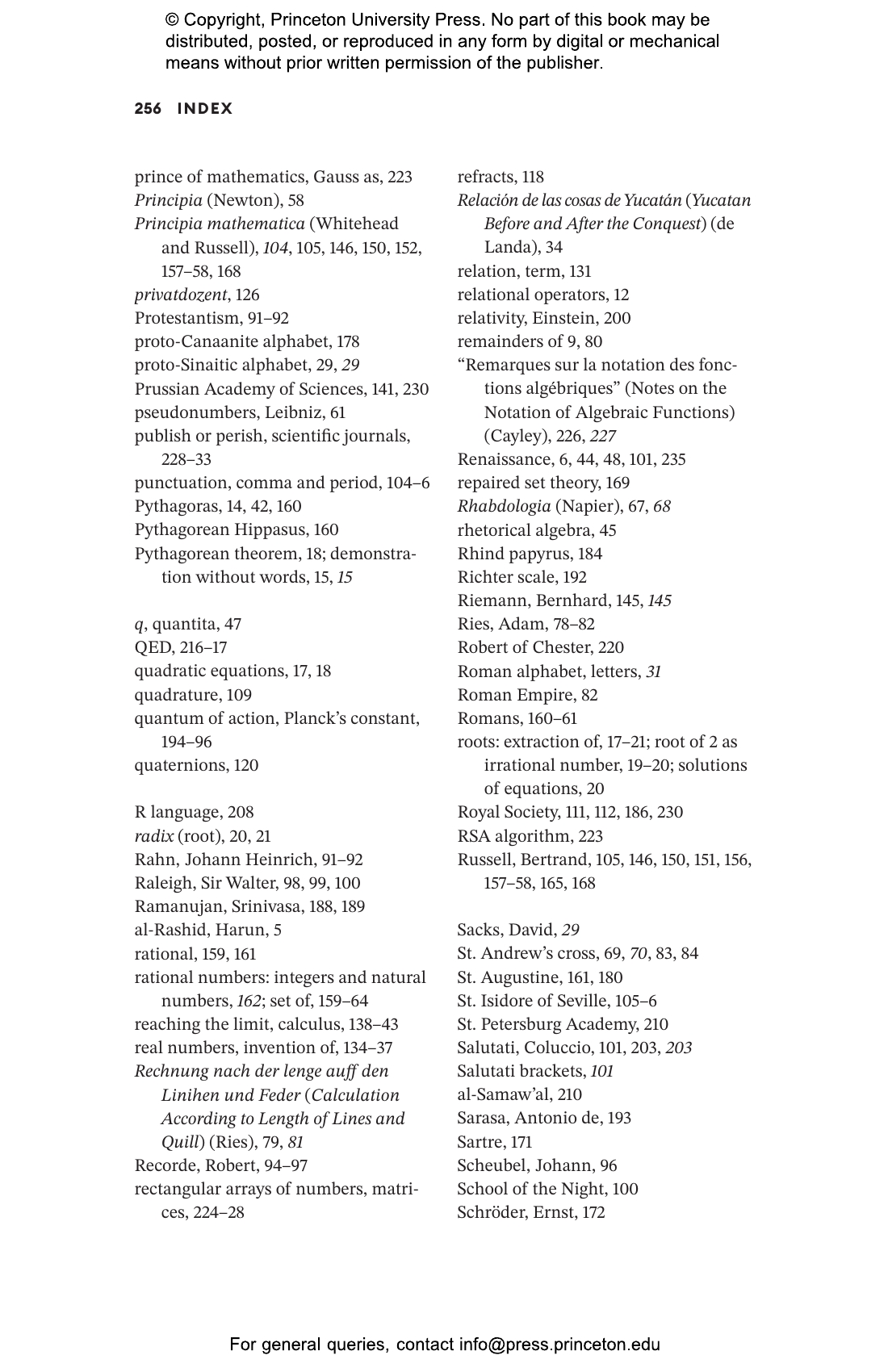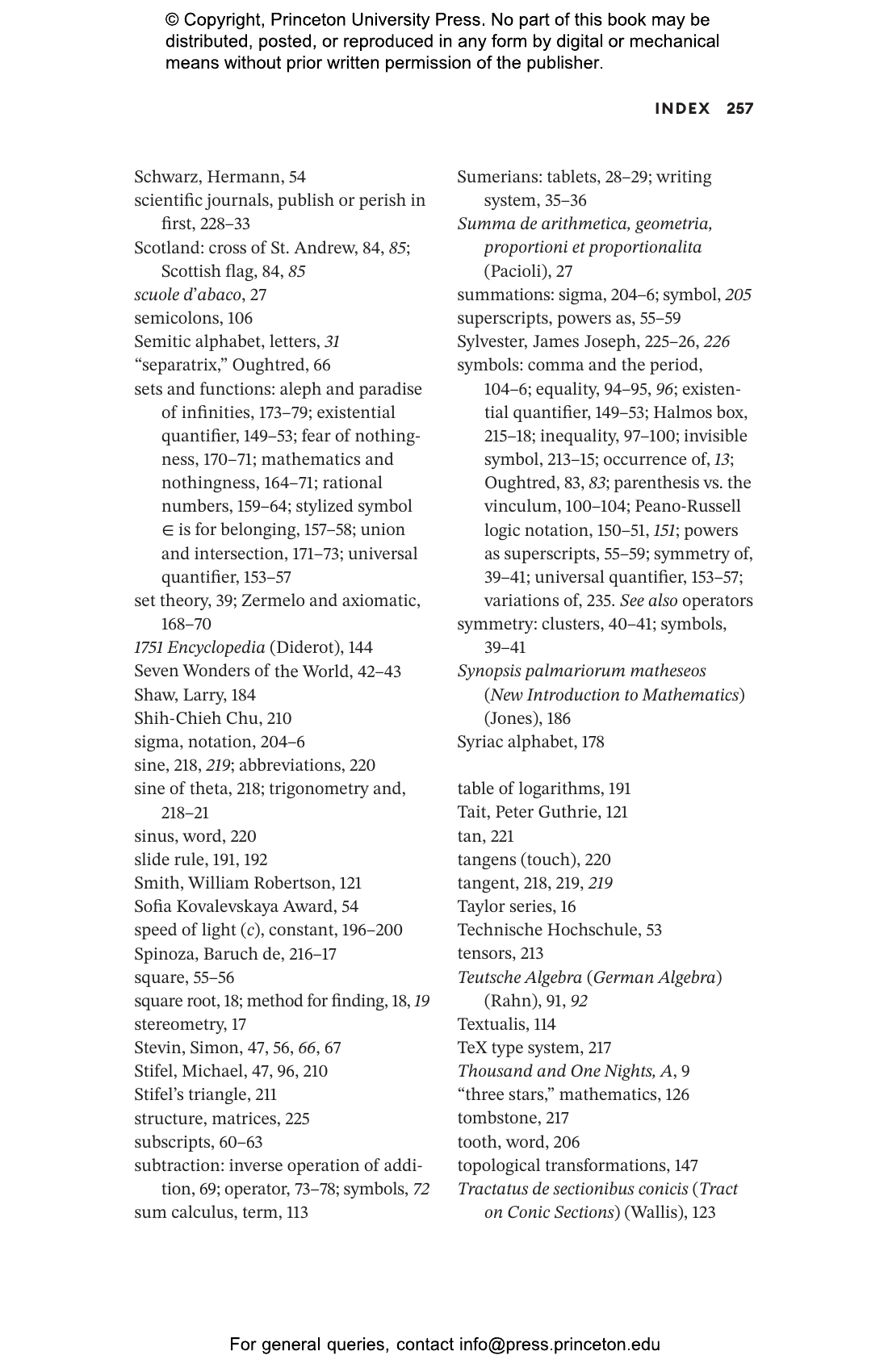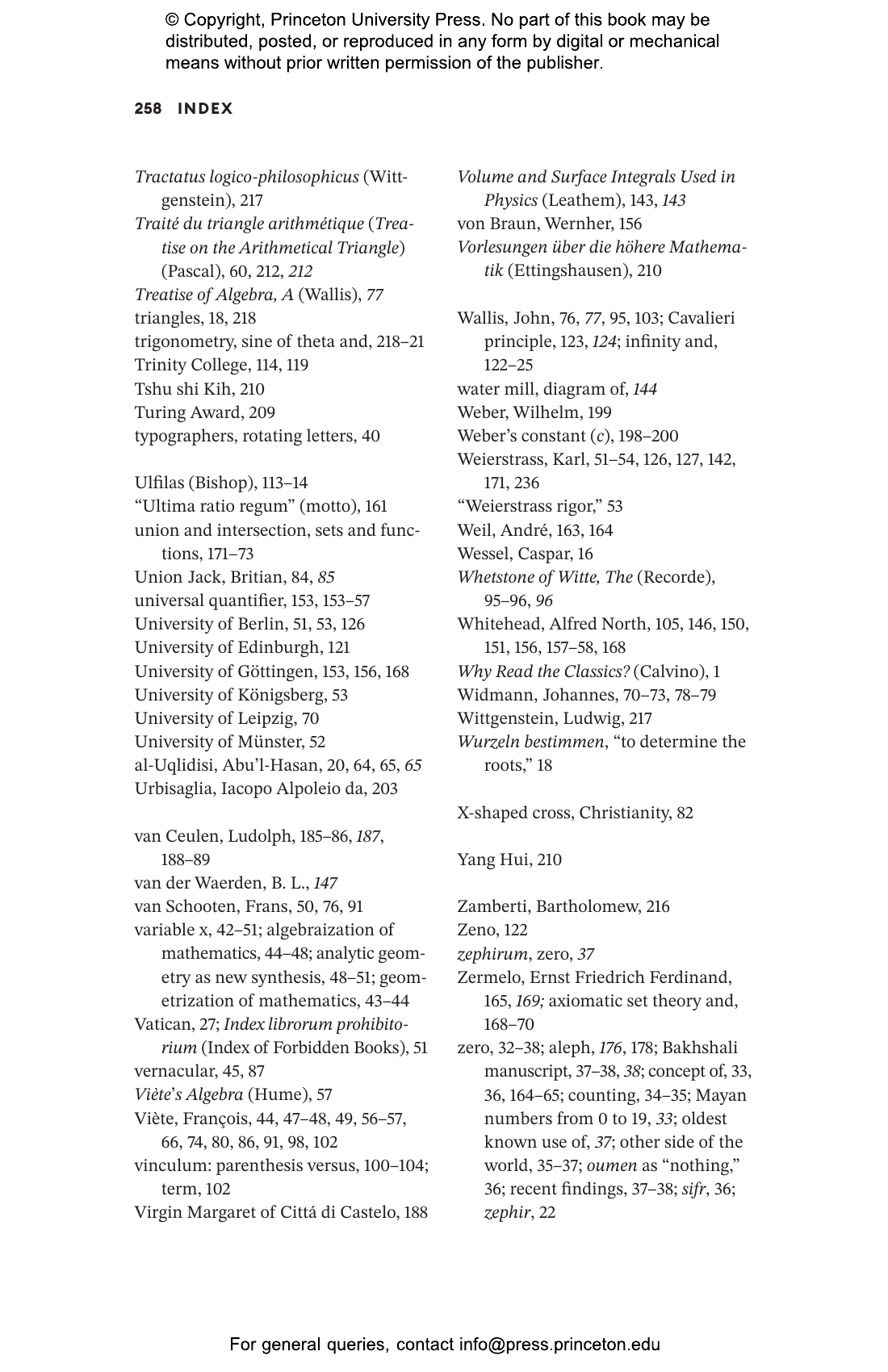Galileo famously wrote that the book of nature is written in mathematical language. The Language of Mathematics is a wide-ranging and beautifully illustrated collection of short, colorful histories of the most commonly used symbols in mathematics, providing readers with an engaging introduction to the origins, evolution, and conceptual meaning of each one.
In dozens of lively and informative entries, Raúl Rojas shows how today’s mathematics stands on the shoulders of giants, mathematicians from around the world who developed mathematical notation through centuries of collective effort. He tells the stories of such figures as al-Khwārizmī, René Descartes, Joseph-Louis Lagrange, Carl Friedrich Gauss, Augustin-Louis Cauchy, Karl Weierstrass, Sofia Kovalevskaya, David Hilbert, and Kenneth Iverson. Topics range from numbers and variables to sets and functions, constants, and combinatorics. Rojas describes the mathematical problems associated with different symbols and reveals how mathematical notation has sometimes been an accidental process. The entries are self-contained and can be read in any order, each one examining one or two symbols, their history, and the variants they may have had over time.
An essential companion for math enthusiasts, The Language of Mathematics shows how mathematics is a living and evolving entity, forever searching for the best symbolism to express relationships between abstract concepts and to convey meaning.
Raúl Rojas is professor of mathematics and statistics at the University of Nevada, Reno, and professor emeritus of computer science and mathematics at the Free University of Berlin. A world-renowned expert in artificial intelligence, he is the author of the seminal book Neural Networks and the editor (with Ulf Hashagen) of The First Computers.
30438
"Offers the numeral nerds among us a guide to the fascinating history of mathematical symbols, some of which have become commonplace in everyday life."—Brianne Kane, Scientific American
"Stimulating. . . . Rojas provides plenty of fascinating background on mathematical history."—Publishers Weekly
"The etymology of [mathematical] symbols is, of course, often punctuated by inevitably fuzzy interpretation. In The Language of Mathematics, Raúl Rojas gives us a survey, from the Greek cross (for the arithmetic operation of addition) to the earliest use of the concept of zero. . . . Some especially charismatic symbols do make an appearance."—Siobhan Roberts, Wall Street Journal
"I loved it."—Jeff O'Neal, Book Riot: The Podcast
"The book is very readable, requiring no mathematical ability. . . . Highly recommended."—D.Z. Spicer, Choice
“Galileo said that the universe is written in the language of mathematics, but what is the language of mathematics? This entertaining book gives a rich historical answer: the often accidental, sometimes contradictory, and all too human story of mathematical symbolism and its evolution.”—John Stillwell, author of The Story of Proof
“The Language of Mathematics is built on the inspired idea that you can generate a thorough and lively history of mathematics by telling the story of its symbols—the <, ∑, +, x, and ∫, and the like that give a page of mathematical text its special color.”—Jordan Ellenberg, author of Shape
“Rojas’s robust and extensive history examines a broad array of mathematical symbols, pleasantly enriching the narration by situating each case within its cultural context and the evolution of mathematics as a discipline and language.”—Teresa Rojano, Center for Research and Advanced Studies, National Polytechnic Institute, Mexico
“Rojas provides an engaging discussion of the history of mathematical notation and symbols and the mathematicians who invented them. A great read.”—Oscar E. Fernandez, author of Calculus Simplified
“Beautifully written for all readers, The Language of Mathematics provides a great journey through the origins and cultural evolution of some of the most important mathematical symbols. Rojas deftly intertwines his historical analysis of the symbols with an engaging exploration of the mathematical concepts they represent.”—Érika B. Roldán Roa, Max Planck Institute for Mathematics in the Sciences and ScaDS.AI, Leipzig University
This publication has been produced to meet accepted Accessibility standards and contains various accessibility features including concise image descriptions, a table of contents, a page list to navigate to pages corresponding to the print source version, elements such as headings for structured navigation, and math formulas in accessible format. Appearance of the text and page layout can be modified according to the capabilities of the reading system.
Accessibility Features
-
WCAG v2.2
-
WCAG level AA
-
Table of contents navigation
-
Single logical reading order
-
Short alternative textual descriptions
-
Print-equivalent page numbering
-
Next / Previous structural navigation
-
Landmark navigation
-
Index navigation
-
Epub Accessibility Specification 1.1
-
ARIA roles provided
-
All non-decorative content supports reading without sight
-
Accessible math content as MathML
-
No known hazards or warnings


